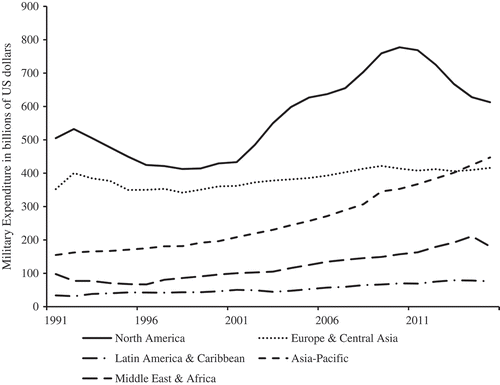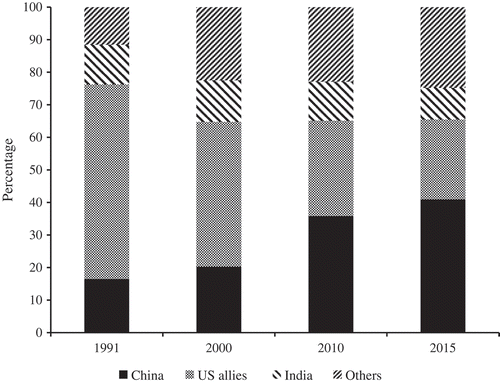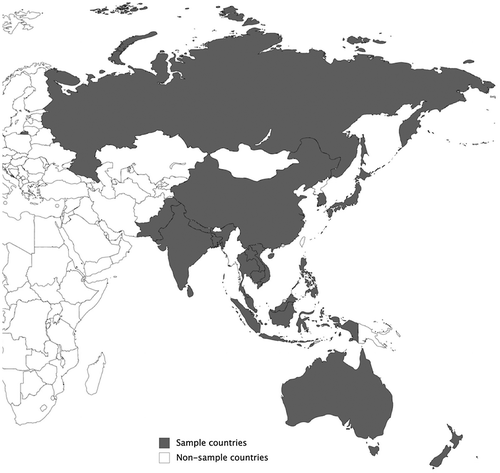Figures & data
Figure 1. Total military expenditure by region, 1991–2015.
Notes: Asia-Pacific includes World Bank classification of South Asia, East Asia, and Pacific, and Africa includes both sub-Saharan Africa and North Africa.

Figure 2. Major Asia-Pacific countries’ regional shares of military expenditure, 1991–2015.
Notes: U.S. allies include Australia, Japan, New Zealand, Pakistan, Philippines and South Korea. Others include Bangladesh, Cambodia, Indonesia, Malaysia, Laos, Nepal, Russia, Singapore, Sri Lanka, Thailand, and Vietnam.

Table 1. ME/GDP values for sample countries at four snapshots.
Figure 3. A map of sample countries.
Notes: The sample countries include Australia, Bangladesh, Cambodia, China, India, Indonesia, Japan, Laos, Malaysia, Nepal, New Zealand, Pakistan, Philippines, Russia, Singapore, South Korea, Sri Lanka, Thailand, and Vietnam.

Table 2. China, U.S. allies and non-U.S. allies demand for ME, 1991–2015.
Table 3. U.S. allies and non-U.S. allies demand for ME, 1991–2001 and 2002–2015.
Table 4. Asia-Pacific military expenditure, 1991–2015.
Table 5. Asia-Pacific military expenditure, expanded contiguity runs, 1991–2015.
Table 6. Estimated coefficients from the SUR method for the demand for military expenditures, 1991–2015.
Table 7. Estimated coefficients from the SUR method for the demand for military expenditures, 1991–2015.
